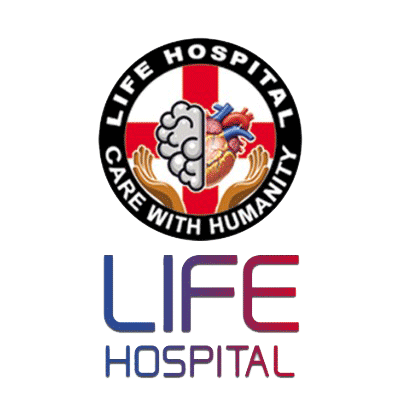Stroke (Brain Stroke) used to lead to irreversible paralysis for a life time until very recently. There are two types of stroke- Ischemic stroke occurs from blockage of a blood vessel supplying the brain and ; Hemorrhagic stroke occurs from bleeding into the brain tissue.
About 85% of strokes are ischemic, and the most severe ischemic strokes are caused by a large vessel occlusion due to clot coming from the heart or clot coming from a plaque in a upstream blood vessel. Early treatment in stroke center in Guntur is essential to rescue potentially salvageable tissue.
Until recently, the only proven treatment for acute ischemic stroke was intravenous thrombolysis with recombinant tissue-type plasminogen activator (tPA) which is effective in 15% of the people. However, since December 2014, several randomized controlled trials have demonstrated the efficacy and safety of mechanical thrombectomy. The clinical benefit of thrombectomy when performed within 6 hours by Best neurologist Doctor in Guntur after the onset of stroke symptoms is now well established. In 2018, two clinical trials found that this time window could be extended in patients selected based on computed tomography (CT) perfusion imaging analyzed with special softwares. The DAWN study found that in people who have a relatively small ischemic core( tissue at the center of the stroke that is not salvageable anymore) and occlusion of the main artery in the territory of the stroke, Endovascular therapy at 6–24 hours post-stroke onset plus medical therapy produced better functional outcomes at 90 days compared with medical therapy alone. In a second study - DEFUSE-3 , patients with large vessel strokes with favorable ischemic core to penumbra (tissue surrounding the irreversibly damaged core), endovascular therapy at 6–16 hours post stroke onset, in addition to medical therapy, improved functional neurological outcome at 90 days, compared with medical therapy alone.
These two trials have brought about a huge paradigm shift in the treatment of stroke. Prior to the publication of these trials, most were treating stroke patients up to 6 hours from last known well time. For patients with stroke symptoms beyond 6 hours, we would not intervene to stop the stroke progression and had minimal impact on patient outcome; we would just treat them medically with standard post-stroke hospital care. For instance, if someone went to sleep at 10:00 pm, woke up with a deficit at 6:00 am and reached the hospital at 6:30 am, we would not have treated them, since it could have been over 8 hours since the onset of the stroke. Now we can intervene in selected patients even up to 24 hours, enabling us to help more patients. More trials are going on to even extend this arbitrary 24 hour cut off( which was based on the inclusion criteria for the trials).
The patients most likely to benefit are patients who wake up with stroke symptoms, because we do not know what time their stroke started. It will also help patients who have taken some time to get to a neuro hospital in Guntur that provides endovascular stroke therapy or thrombectomy for stroke in guntur, and arrive outside the previously limited 6-hour treatment window.
Stent retrievers and suction catheters have been available for 5 years now in other countries. In India and especially Andhra Pradesh, the treatment is being adapted at a snail pace. The main reasons are lack of availability of the specialists to perform these procedures and due to the cost of treatment and absence of support from the government. The great thing is that the devices and, as importantly, the techniques have been constantly evolving with the cost reducing ever so slightly, resulting in incredibly high technical success rates that a decade ago was impossible . Two embolectomy techniques are particularly useful. The simplest is to put a suction catheter up to the clot and suck it out. This could be argued to be cheaper if successful, especially in cost conscious areas such as ours. This is called the ADAPT technique. The other method, is to combine a suction catheter placed proximal to the clot with a stent retriever, i.e., a stent that is attached to a microguidewire, across and past the clot. This could be expensive due to the use of additional devices. This is known as the Solumbra technique; combines the name for a commonly used stent retriever Solitaire (Medronic, Inc., Minneapolis, MN, US) and the commonly used suction catheter made by the company Penumbra (Alameda, CA, US). Before these devices and techniques, we had maybe a 50% chance of opening up a blocked artery, now it is close to 95%. The procedures are also much shorter than in the past, and as is commonly stated, time is brain. For every 30 min delay in reperfusion, the patient has about a 10% decreased chance of a good outcome. In many cases, we can now open up these arteries in less than 30 minutes from start of the procedure.
Despite these advances, due to aforementioned reasons of lack of availability of specialists for thrombectomy brain procedure in Guntur and lack of availability of dedicated neuro cath labs and the cost, mechanical thrombectomy is facing a hurdle. But with awareness among the people and other doctors, we can rapidly scale the treatment. Specialists who received advanced training in endovascular techniques in the US like Dr.Kalyan Chekravarthy Sajja are coming back home to serve the people. Dr.Kalyan Chekravarthy Sajja, has opened his cath lab at Life hospital in Guntur to give best treatment of brain stroke in Guntur and he states his main aim Is to democratize mechanical thrombectomies and offer them to people at a low cost so that they won’t be paralysed for life. He envisions a society without disability from stroke, strongly prospering and contributing to the economy of the nation.

